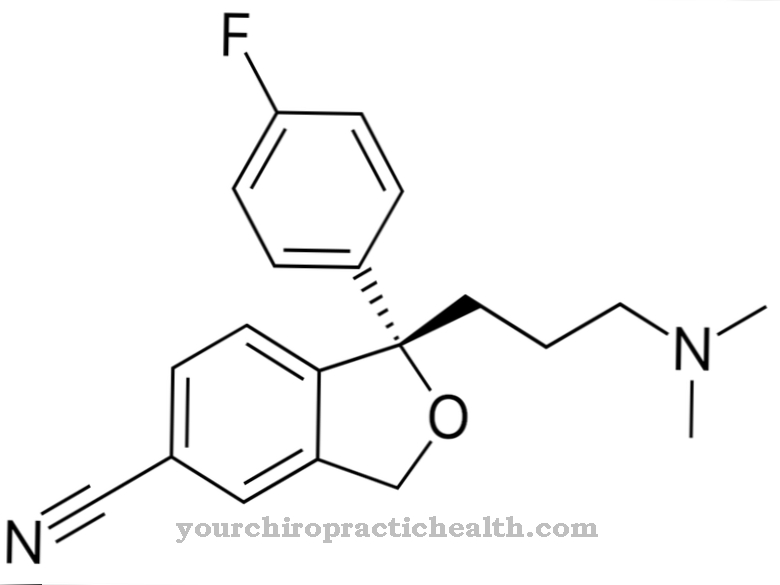Co-trimoxazole is an antibiotic combination drug that consists of the antibiotic trimethoprim and the sulfonamide sulfamethoxazole in a fixed ratio of one to five. The drug inhibits the biosynthesis of tetrahydrofolic acid in bacteria and thus hinders DNA synthesis.Cotrimoxazole, which is primarily used to treat urinary tract and respiratory infections, as well as typhoid and paratyphoid fever, is also effective against certain protozoa and some species of fungus.
What is co-trimoxazole?
Cotrimoxazole is a combination drug with bacteriostatic action against a wide range of gram-positive and gram-negative bacteria. In addition, the combination drug is also effective against certain protozoa and some types of fungus. It contains the antibiotic trimethoprim and the antibiotic sulfonamide sulfamethoxazole in a ratio of one to five. The two main active ingredients of the drug largely complement each other and interfere with the folic acid balance of bacteria.
As a sulfonamide, sulfamethoxazole inhibits the enzyme folic acid synthetase. The antibiotic trimethoprim, in turn, inhibits dihydrofolate reductase, another important enzyme in the folic acid metabolism in bacteria. In this way, the combined active ingredients inhibit two different enzymes of the folic acid metabolism at the same time, so that the risk of resistance building is reduced due to the duplication.
Cotrimoxazole ultimately hinders the synthesis of tetrahydrofolic acid, which is required as an essential intermediate (metabolite) for the synthesis of purine bases and thymidine, building blocks of DNA.
An important prerequisite for combining two or more active ingredients is that their biological half-lives are approximately the same. Cotrimoxazole fulfills the condition very well with half-lives of 10-11 hours and 9-11 hours for trimethoprim or sulfamethoxazole in the latter case.
Pharmacological effect
Pharmacologically, the intake of co-trimoxazole has direct and indirect effects on the body and its organs. The bacteriostatic properties of the drug do not only extend to pathogenic bacteria, but also, because of the broad-spectrum effect, to some extent also to the normal bacterial flora, especially in the digestive tract, so that reversible, but sometimes serious, digestive problems are observed.
The two main active ingredients are almost 100 percent absorbed in the intestine and are biologically available. Direct pharmacological effects mainly consist of allergic reactions, which show up, for example, in skin irritations and in rare cases in blistered skin flakes (Lyell's syndrome).
The bacteriostatic properties of co-trimoxazole, which are based on the inhibition of folic acid formation, can also affect the metabolism to a certain extent, so that general anemia can set in, especially if other drugs with a similar spectrum of activity as Barbiturates, pain relievers, and phenytoin or primidone are taken.
Further indirect effects can result from the direct influence on the potassium balance, which can have an influence on the heart rhythm and the sensitivity of sensory nerves.
Medical application & use
A typical main area of application for co-trimoxazole is inflammation of the upper and lower airways. A great advantage of the combination drug is that the fungus Pneumocystis jirovecii, which causes interstitial pneumonia, can also be contained. Another main area of application is infections of the kidneys and of the entire male and female urogenital tract.
Treatable diseases also include inflammation of the prostate and venereal diseases such as ulcus molle (soft chancre) and lymphogranuloma inguinale, an infectious venereal disease that is more common in the tropics, which among other things leads to swelling of the lymph nodes in the genital and groin area.
Co-trimoxazole is also used to treat infections of the gastrointestinal tract, including salmonella poisoning and typhoid and paratyphoid fever. Brucellosis and nocardiosis as well as other infectious diseases are also part of the range of uses of the combination drug.
The reduced risk of resistance development in the case of pathogenic germs makes it possible to take the combination preparation for preventive purposes, especially in immunosuppressed people.
Due to its wide range of uses, the World Health Organization (WHO) included the drug combination of trimethoprim and sulfamethoxazole in the list of indispensable drugs back in 1977. For the treatment of an infection, the dose for adults is normally 2 x 960 milligrams daily. The dose can be increased up to five times if there is an acute Pneumocystis jirovecii. For long-term therapies and for preventive measures, the daily dose is reduced to 480 milligrams.
You can find your medication here
➔ Medicines for colds and nasal congestionRisks & side effects
As with treatment with other antibiotics, the use of co-trimoxazole can be associated with undesirable side effects. The most common side effects relate to temporary disorders of the digestive system. Symptoms are nausea, vomiting and loss of appetite. In rare cases, inflammation of the oral mucosa also occurs. Skin reactions such as rashes and hives occur in up to 4 percent of cases. Severe skin irritation or photosensitization have been observed, but are rare.
Disturbances of the blood picture in the form of anemia or a decrease in the number of leukocytes (leukopenia) can also occur. At high doses of co-trimoxazole, potassium levels can rise and trigger hyperkalemia, with symptoms such as arrhythmia, muscle weakness and paralysis.
Before starting treatment with the combination product, the most important interactions with other drugs should be considered. For example, the effect of anticoagulants from the group of 4-hydroxycoumarins is increased. Treatment with co-trimoxazole is contraindicated in cases of known hypersensitivity to sulfonamides or severe renal insufficiency.




























.jpg)